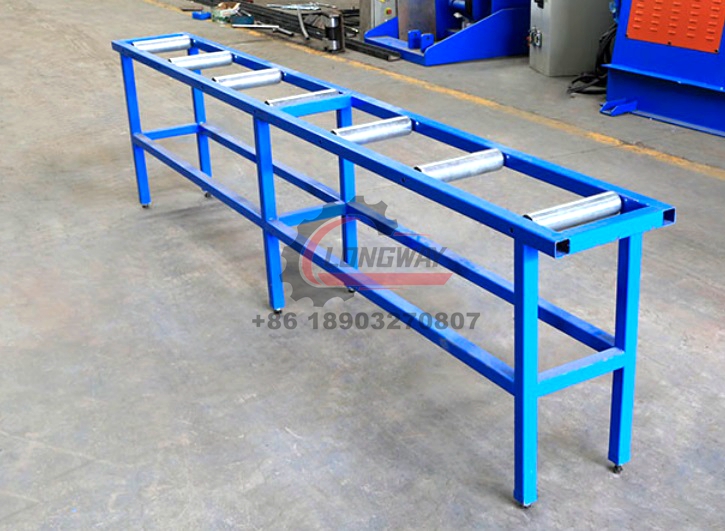roll forming machine for steel
The Innovations of Roll Forming Machines for Steel
In today's manufacturing landscape, the demand for precision and efficiency has never been higher. One of the most effective solutions to meet these demands in steel production is the roll forming machine. This advanced piece of equipment is designed to shape metal into various profiles with exceptional accuracy, speed, and repeatability, making it a staple in many industries, including construction, automotive, and furniture manufacturing.
What is Roll Forming?
Roll forming is a continuous bend process where a long strip of metal, typically steel, is fed through a series of rotating rollers to create specific cross-sectional shapes. The metal is gradually shaped through multiple stations, with each station performing a small amount of bending or forming. This technique allows for the production of complex profiles that would be challenging to achieve with other methods, such as stamping or machining.
Advantages of Roll Forming Machines
1. High Efficiency One of the primary advantages of roll forming machines is their high production speed. Once the machine is set up and operational, it can produce parts continuously, significantly reducing cycle times compared to traditional manufacturing methods. This efficiency is particularly beneficial in high-volume production scenarios.
2. Material Utilization Roll forming is notable for its minimal waste generation. The process can be designed to optimize material usage, resulting in less scrap and lower raw material costs. This is a crucial factor for businesses looking to maintain profitability while adhering to sustainable practices.
roll forming machine for steel

3. Quality and Precision Roll forming machines are engineered for precision. The process provides excellent dimensional accuracy, which is essential for industries requiring tight tolerances. Additionally, the consistent production of the same profile ensures that each component meets the specifications, contributing to the overall quality of the final product.
4. Flexibility Modern roll forming machines are highly versatile. They can be adjusted easily to accommodate different profiles and materials, making them suitable for a range of applications. Whether it’s producing simple angles or more complex shapes like Z-purlins and C-channels, these machines can be tailored to meet diverse manufacturing needs.
5. Cost Effectiveness Although the initial investment in roll forming equipment can be significant, the long-term cost savings make it an attractive option. The high throughput, reduced waste, and lower labor costs contribute to a favorable return on investment.
Applications of Roll Forming Machines
The versatility of roll forming machines allows them to be employed across various sectors. In the construction industry, they are used to produce steel framing, roofing sheets, and siding. The automotive sector benefits from roll-formed parts for vehicle body structures, brackets, and other components that require high strength and lightweight materials. Furthermore, the furniture industry utilizes roll forming for components such as table legs and shelving systems.
Conclusion
As manufacturing processes continue to evolve, roll forming machines for steel hold a prominent position in meeting the demands of modern production. Their ability to deliver high-quality, precise, and efficient production makes them indispensable in various industries. With ongoing advancements in technology, including automation and smart manufacturing, the roll forming process is set to become even more efficient and integrated within the global supply chain. For businesses looking to enhance their manufacturing capabilities, investing in a roll forming machine could very well be a game-changer in their production strategy. As we move toward a more sustainable and efficient manufacturing future, roll forming technology will surely continue to play an essential role in shaping industries worldwide.
-
Roof Panel Machines: Buying Guide, Types, and PricingNewsJul.04, 2025
-
Purlin Machines: Types, Features, and Pricing GuideNewsJul.04, 2025
-
Metal Embossing Machines: Types, Applications, and Buying GuideNewsJul.04, 2025
-
Gutter Machines: Features, Types, and Cost BreakdownNewsJul.04, 2025
-
Cut to Length Line: Overview, Equipment, and Buying GuideNewsJul.04, 2025
-
Auto Stacker: Features, Applications, and Cost BreakdownNewsJul.04, 2025
-
Top Drywall Profile Machine Models for SaleNewsJun.05, 2025








